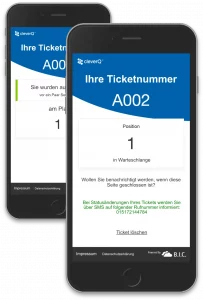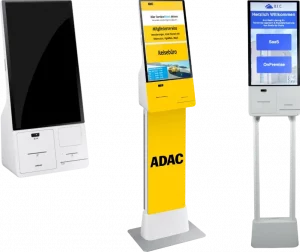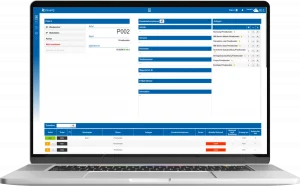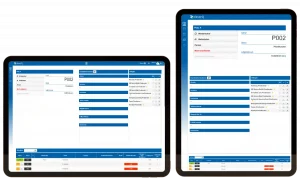Online Queue Management System | Advisor
In this guide, you’ll learn all about queue management, why it’s important for your business, and which systems and vendors to go for when implementing a queue management system.
Abbreviations: Online Queue Management System: OQMS, Queue Management System: QMS.
Imagine a scenario where you are visiting a site for essential services. You enter the waiting room and it is crowded. Some of the people waiting do not even have a place to sit. Let’s assume you expected a long queue. What you haven’t factored in, however, is the confusion your customers are experiencing. You have no idea which queue they should be in, where their place in line is, or if the line is even moving. Frustrating, isn’t it? You risk this feeling of frustration if you don’t have an online queuing system set up at your site.
Topic Overview
Poor queue management
No one likes to wait in line. In fact, customers would rather leave your store than wait in a long line because they feel it is a waste of time. Studies show that over 70% of customers prefer to abandon their shopping process if they have to wait in line for more than 5 minutes. Another study shows that waiting times are perceived as particularly unpleasant when the people waiting are bored – which is precisely the case in a queue or waiting room.
If your business doesn’t have a queuing system, you’re missing an opportunity to provide great service to your customers. Check out cleverQ’s guide to queuing systems.
What is queue management?
Long queues often mean that demand for a service exceeds supply. If the queue is at a hospital, for example, then the supply of doctors is less than the number of patients needing medical attention. Online queue management technology provides businesses with the ability to regularly monitor arrival rates and the number of customers waiting, reducing wait times and significantly improving customer flow.

There are 4 main types of queues:
Long queues often mean that demand for a service exceeds supply. If the queue is at a hospital, for example, then the supply of doctors is less than the number of patients needing medical attention. Online queue management technology provides businesses with the ability to regularly monitor arrival rates and the number of customers waiting, reducing wait times and significantly improving customer flow.
1. structured queues
They are orderly, and people stand in a predictable position. This type of queue is most often found at security checkpoints and supermarket checkouts.
2. unstructured queues
They are usually unpredictable, and people stand in different directions and positions.
3. mobile
Queue
Here, people use their cell phones to get in line, booking appointments through a queue management app and only reporting to the service center when they are due to be served.
4. kiosk-based queues
Here, customers enter their data at a self-service kiosk and explain why they visited the store. These queues are common in medical facilities and banks.
Regardless of the queues you set up in your business, online queue management is important because it controls physical queues and minimizes customer waiting time. The best part is that not only the perceived waiting time is reduced, but also the actual waiting time.
What most companies don’t realize is that customer perceived wait time is even more important than actual wait time. Because people tend to feel that they are waiting longer than they actually are. For example, if a customer encounters a long line, even if it moves quickly, if the waiting area is disorganized or crowded, they will automatically assume that the wait will be long. Some will leave and those who have to stay will end up angry and frustrated.
What is an online queue management system?
An online queue management system is a technology solution that streamlines customer queuing and manages the flow of people through your service facility or business. The system ensures that customers are served in the right order and efficiently, which significantly improves the customer experience.
A queue management app also manages your customers’ wait times at all touchpoints with your business, before and after service. A queuing system can be either in the form of hardware or software, but its main purpose is to make it easier for your customers to access your services. Think of it as an extension of CRM.
Depending on the nature of your business, the queue may be the first interaction a customer has with your services or products. Studies show that customers are 49% more likely to make impulse purchases when their experience is personalized. By ensuring that wait time is managed, you optimize the individual customer experience.
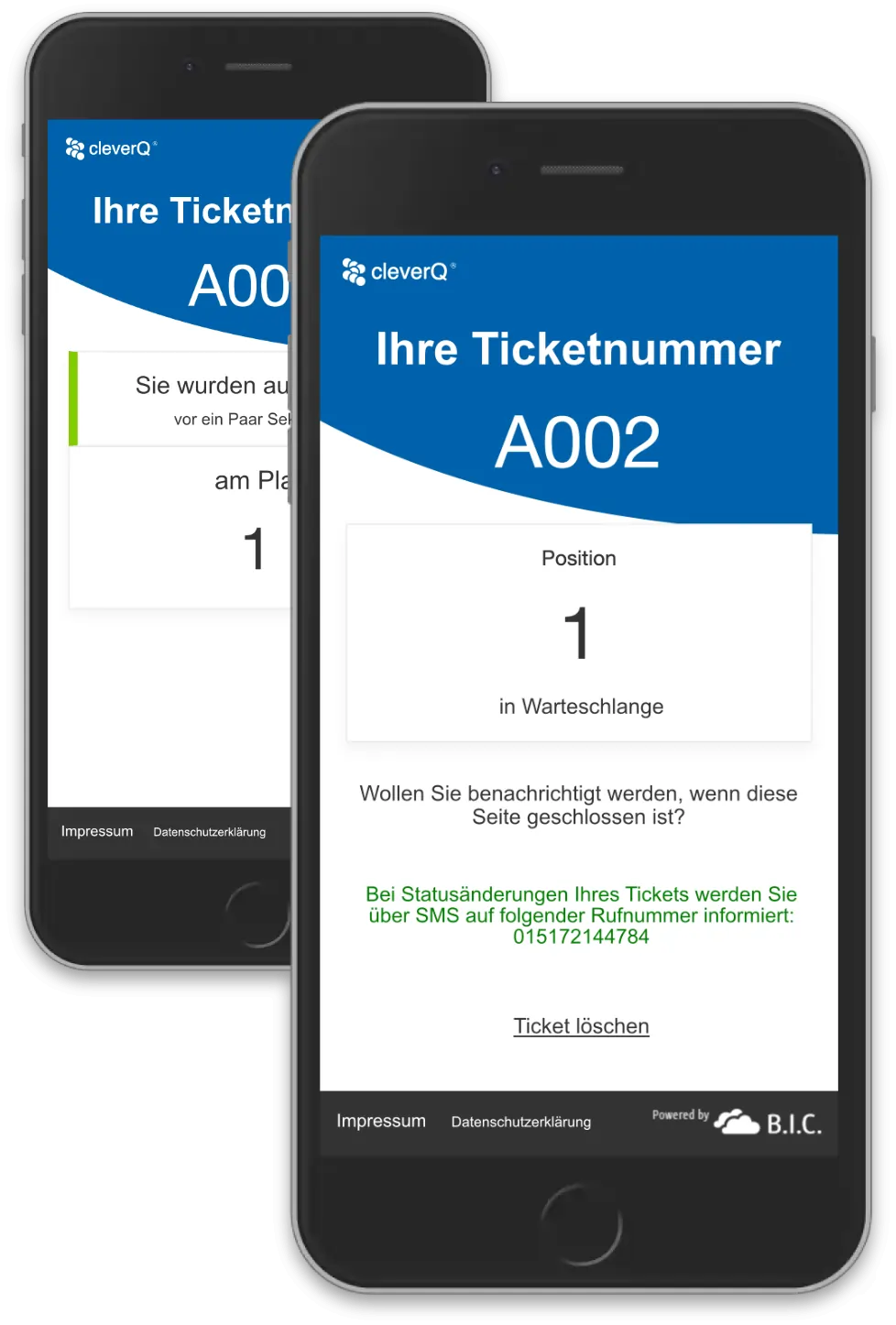
How does a queue management system work?
According to the queue theory, there are 4 main components of queue management:
1st component:
Customer population
This refers to the number of people who visit your premises to use your services. It can be either limited or unlimited. If you are dealing with a limited number of customers, you already know the exact number of people you expect to serve. A good example would be
People waiting to get on a plane.
With an unlimited number of people, on the other hand, you can serve as many people as there are in your store. This is the most common type of customer population and is often characterized by random visitors. An effective queue management system allows you to efficiently serve customers based on the number of customers you normally serve.
2nd component:
Service mechanism
Service mechanisms assess the resources you needed to maintain the highest standards of service delivery. Some of the factors that
considered in this element:
- The number of employees available for customer service.
- The average waiting time for each customer.
- The number of queues.
These elements are critical because they help you determine your service patterns.
3rd component:
Arrival method
This component performs an analysis of the way customers visit your store. For example, do they come in groups or individually? It also takes into account the average hourly distribution of customers and the time interval between arrivals, making it easy to analyze arrival patterns.
4th component:
Queue characteristics
On average, more than 20 minutes pass in the queue for each purchase. That’s a lot of time! However, you can reduce this time by
determine the behavior of your customers and the order of service/queue discipline.
There are 4 main types of queue management discipline:
1. priority selection
Here, customers are served according to the urgency of their needs. For example, in a hospital, patients with serious injuries are served first.
2. operation in random order
In this order of service, customers are selected at random.
3. last in, first out
The customers who were last in your store are served first
4. first in, first out
Customers are served on a first-come, first-served basis.
Customer behavior, on the other hand, is about how customers behave when they join a queue. For example, a customer might leave without getting in line if they think they will wait a long time without being served. Remember that customers tend to overestimate their waiting time. They could also join a queue but still leave without using your services if they feel they have waited enough already.
A queue management system combines the above 4 elements to manage customer wait time in your store and ultimately improve their experience. You should note that the system cannot completely eliminate queues and waiting times. However, it manages customer waiting time, which is critical to good customer service.
How to implement an online queue management system?
During the implementation phase, your preferred vendor will set up their system. However, we recommend that you first consider the following points before implementation:
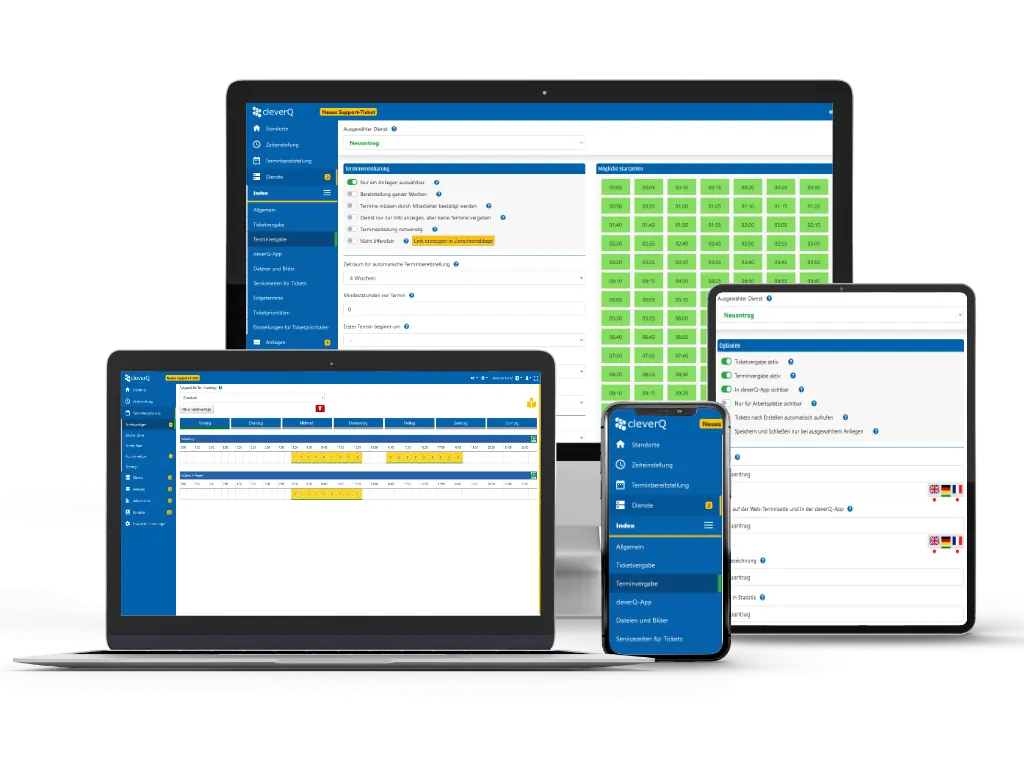
1. identify your unique business needs
Every company has its own reasons for implementing an OQMS and needs an initial goal analysis, before implementing a QMS. For example, one agency wants to reduce the number of people in the lobby and ensure that people only show up when they are to be served to avoid congestion and also potential aggression.
Steve Jobs once emphasized that the secret to success is to start with the customer and then work backwards to develop technology that works.
Start by identifying your organizational requirements, then share them with your online queue management system vendor. This helps him to develop a customized solution that meets your company’s requirements. Go through all touchpoints with the customer, which can reveal any inefficiencies in the customer journey.
2. define the main objectives of the queue management system
What exactly do you want to achieve with a queue management system? Your goal could be to reduce customer traffic, optimize customer service, or even manage the average customer wait time. Talk to the queuing system vendor and make your expectations and goals clear. This will help them configure a solution best suited to your needs.
3. test the system before you implement it
Implementing an online queue management system without first testing it is a recipe for disaster. What if the system breaks down? What if the system does not reduce the waiting time, but does exactly the opposite? Test it before you use it. This gives you time to determine if the solution meets your needs and can fulfill its intended purpose. During the testing phase, your staff will also be trained on the right skills to manage the system.
4. evaluate and refine
This is the last step before the implementation phase. Identify any inconsistencies and inefficiencies and ask your supplier to fix them. When you implement the queue management system, it should be almost perfect. This means that disruption should be minimal, your employees are familiar with it, and the system is doing its job.
Which industries benefit from an OQMS?
Virtual queues are becoming increasingly popular, and it’s clear why: nobody likes standing in line. Here are the key industries that could benefit.

QMS. Retailer
More than 75% of customers believe that the worst part of their shopping experience in a store is waiting in line to pay for their products. As a retailer, you already know how fiercely competitive your industry is and how customer experiences affect your bottom line. If your customer has to wait more than 1 hour to be served, then you are making it easy for them to choose your competitors. An online queue management system keeps your store organized and, most importantly, it improves the customer experience. This will turn your store visitors into loyal customers.
Government and public service providers
Government agencies have a reputation for leaving long wait times and frustrating customers/citizens. This is due to poor queue management, which is usually overwhelming for both staff and citizens. In addition, there are multiple touch points throughout the arrival process and a multitude of procedural steps that cannot be completed efficiently without an effective system in place.
While queuing is unavoidable, a queuing system can help optimize citizen wait times, ultimately resulting in minimal queues. Key benefits of an online queue management system for government agencies include:
- Efficiency across all touchpoints.
- The possibility of filling in the data of the citizens before being served, to avoid queues at some counters.
- Citizens are given an estimate of their wait time based on how many people are ahead of them in the queue.
- Citizens can track when it’s their turn from anywhere, reducing foot traffic and congestion.
- Improves employee efficiency.
Restaurants
The average waiting time in restaurants is 23 minutes. While restaurants aren’t always busy, peak hours can put a tremendous strain on staff and resources. There are many hungry and impatient customers waiting for their food, and they expect excellent customer service. During this time, wait times are inevitable and without an effective system in place, you’re dealing with angry, hungry and frustrated customers.
It goes without saying that customer service is critical in the hospitality industry. Before guests visit your establishment, they first look at your online reviews. What do you think happens when most of your customers complain about long service times? It won’t matter that your food is delicious.
An online queuing system can help you deliver exceptional service to your customers by ensuring staff are focused on delivering satisfying experiences rather than managing long queues. These systems can increase staff efficiency with options for real-time guest monitoring – allowing your team to deliver a better customer experience. You can also use the system to capture important guest data, including special requests and personal information that can help you provide quality food and service. Most importantly, you’ll be able to identify key patterns in your restaurants, such as the most frequently ordered dishes and the busiest days and hours.
Hospitals and health care facilities
Did you know that a patient has to wait more than 1.5 hours in the emergency room before they can be taken to their room? Given the critical role that health care facilities play, waiting times at these facilities must be reduced. Even before COVID-19, hospitals were always overcrowded and waiting times were unbearable. After COVID-19, they got even worse. The truth is that managing long, endless queues can be overwhelming, especially when multiple services are offered. This is where queue management comes into play. Healthcare facilities can use queue management to:
- Guide customers smoothly through touchpoints. For example, a client can quickly move through the arrival process for registration, intake, imaging, blood work, etc., without having to wait in line for all of these services.
- Enable physicians, nurses, and staff to access patient data such as basic information, medical history, blood pressure, gender, age, and the physician they wish to be seen by. This increases operational efficiency by digitizing some time-consuming processes.
- Allow customers to wait their turn and monitor their queue number from anywhere. This can be in the cafeteria, waiting area, or even in their vehicle to avoid congestion.
- Inform patients of their expected wait time, the number of patients ahead of them, and their doctor’s schedule.
If you choose a virtual queuing system that is integrated with an online appointment booking system, patients can easily book their appointments in advance.
Educational Institutions
In educational institutions, especially universities and colleges, there are often long queues outside administrative buildings. The Administration Building is something of the central nervous system of the institution and is frequently visited by students for a variety of reasons, including registering for classes, replacing misplaced ID cards, tuition payments, counseling services, and more. A powerful queue management system can help staff anticipate crowds and prioritize visitors according to the service they want.
Banks and financial institutions
When it comes to long lines at individual service counters, financial institutions rank as high as healthcare facilities. There is always a long wait, even when some counters don’t seem to serve anyone. If you work in a bank, you should know that your customers want to feel valued. They need to know that their time is valued, and a queue management system can help you achieve that. With a queue management system, you can give your customers the freedom to use your services in the way they are most comfortable.
A queuing system also provides customers with a digitized experience that ensures a high level of convenience. For example, customers can fill out electronic forms before coming to the counter. That way, when it’s their turn, they already have all their data filled in, which speeds up the process. Bank employees can use online queue management systems to group customers as they arrive and place them in different queues, based on priority. You can also use it to assign customers to an employee who can help them based on their specific needs.
What are the key benefits of implementing an online queue management system?
Queue management systems are mainly used to avoid long queues, but they can do much more. Here are the main benefits of implementing a digital queuing system in your company.

1. shorter waiting and service times for customers
This is the main advantage of virtual queuing systems. Customers don’t like waiting in long lines without knowing when they will be served. A recent survey showed that over 70% of customers believe that companies should value their customers’ time. That’s why they’re more likely to become repeat customers when a company offers fast, but high-quality services.
Digital solutions like cleverQ help you manage queues by creating efficient procedures and shortening queue lengths, which ultimately reduces the number of departures. Your customers can virtually join a queue by phone, computer or on-site self-service kiosk.
2. self-service kiosk on site
This gives them the flexibility to join the queue from anywhere and at a time that is convenient for them. Still not convinced? Well, online queue management systems can reduce the waiting time in your premises by a whopping 97%.
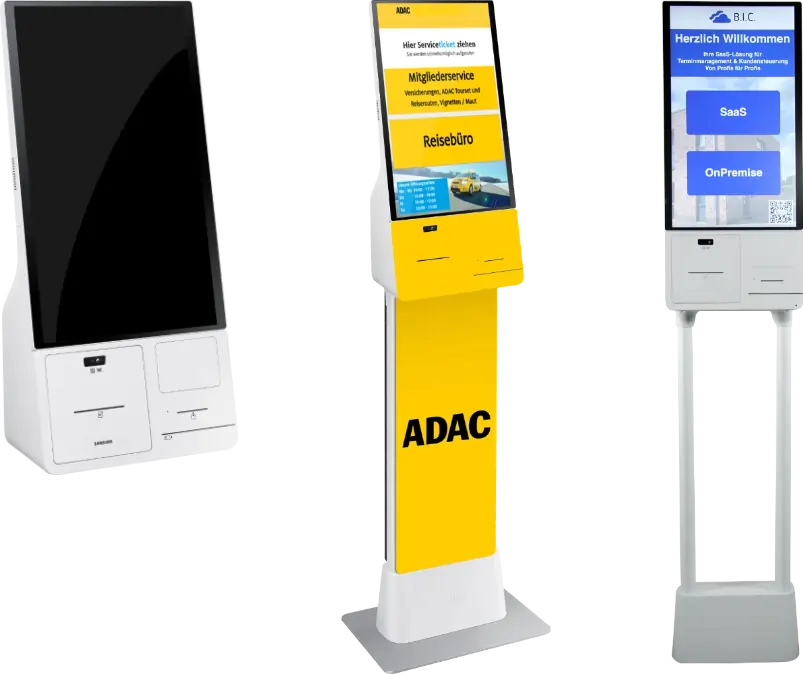
3. reduced customer complaints
According to a Walker study, customers consider positive experiences to be one of the most important differentiators of a brand, ranking them higher than price, product quality and service quality. If customers feel that their time is being wasted in the queue, you can expect complaints.
If customers have to wait a long time to be served, this can have a negative impact on customer satisfaction. What happens if you are so busy that shortening wait times is not possible? Well, with a digital queuing system, you can manage customer expectations by giving them a realistic estimate of how long they can expect to wait. This reduces the perceived waiting time, and if customers feel that they do not have to wait long, they will be more patient.
4. helps you manage virtual waiting rooms
Virtual digital management systems give your customers the freedom to use your services virtually without having to stand in physical queues. In some cases, there is no need to wait in line at all. Since customers can wait their turn from anywhere, they don’t have to come to your premises to get in line or be called. This frees up space in your waiting area and prevents congestion and unnecessary interruptions for your staff.
The best part is that you can easily manage scheduled appointments and even on-site visits. With cleverQ’s digital queue management system, you can access all queues through the dashboard. This allows you to effectively manage available human resources and provide quality service to your customers.
5. improves the image of your company
A company that values its customers’ time exudes a “feel-good” atmosphere that enhances the customer experience and makes them loyal. If your company uses a queuing system, you will effectively reduce waiting times; your customers will be satisfied with your services and leave positive feedback. They will also assume you are innovative, technologically advanced, care about their needs and respect their time. All of these things combined lead to a positive brand image. A good queue management strategy will help you meet the needs of your customers. You can access information such as customer surveys and on-site data that gives you a holistic view of what your customers really need and how you can best serve them.
6. improves productivity and employee satisfaction
Long lines are not only frustrating for your customers, but also for your employees. What happens when there are too many people and long lines? Your staff is forced to manage traffic by either erecting physical barriers or making sure people stay in line. They may also spend a lot of their time answering phone calls, helping customers fill out paperwork, or making sure they have the right document before serving the customer. Not to mention the frustrated customers they have to reassure. It can be overwhelming.
Your employees are only human, and if they’re constantly dealing with angry customers, their passion simply wanes. However, when you implement, digital queuing systems, your employees can focus on their tasks so they feel productive. You also optimize the customer experience by ensuring your employees are dealing with happy customers and take pride in their work.
One of the biggest mistakes business owners make is not realizing that keeping their employees happy is just as important as keeping their customers happy. When your employees are unhappy, they are less productive and voluntary turnover rates increase.
7. optimized communication
Good communication and practices foster a strong connection between your brand and your customers. An online digital queue management system improves your two-way communication and allows your staff to stay in touch with customers.
For example, customers can easily check in and out and request status updates via email, or an app. In turn, your staff can use the system to keep customers informed about their place in the queue. For example, if the average wait time increases due to unavoidable circumstances, your staff can let the customer know that they may not arrive on time, but they will still have to wait.
This increases transparency and promotes a healthy relationship between the company and its customers.
8. reduces operating costs
Good communication and practices foster a strong connection between your brand and your customers. An online digital queue management system improves your two-way communication and allows your staff to stay in touch with customers.
For example, customers can easily check in and out and request status updates via email, or an app. In turn, your staff can use the system to keep customers informed about their place in the queue. For example, if the average wait time increases due to unavoidable circumstances, your staff can let the customer know that they may not arrive on time, but they will still have to wait.
This increases transparency and promotes a healthy relationship between the company and its customers.
The most important advantages in brief For companies
- Increases employee productivity.
- Eliminates long queues.
- Provides valuable data.
- Reduces customer complaints.
For customers
- The possibility of joining a wrong queue is eliminated.
- You can use the time in the queue productively.
- Shorter wait times – both actual and perceived wait times.
- They are informed about their position in the queue in real time.
For managers
- Helps them evaluate customer behavior.
- Helps them create a healthy work environment.
- Helps manage crowds.
The most important features of an efficient queuing system
Virtual queuing systems are versatile and dynamic. They often have different tools and components that work together to help you
Achieve your organizational goals. Here are the main features you should look out for.
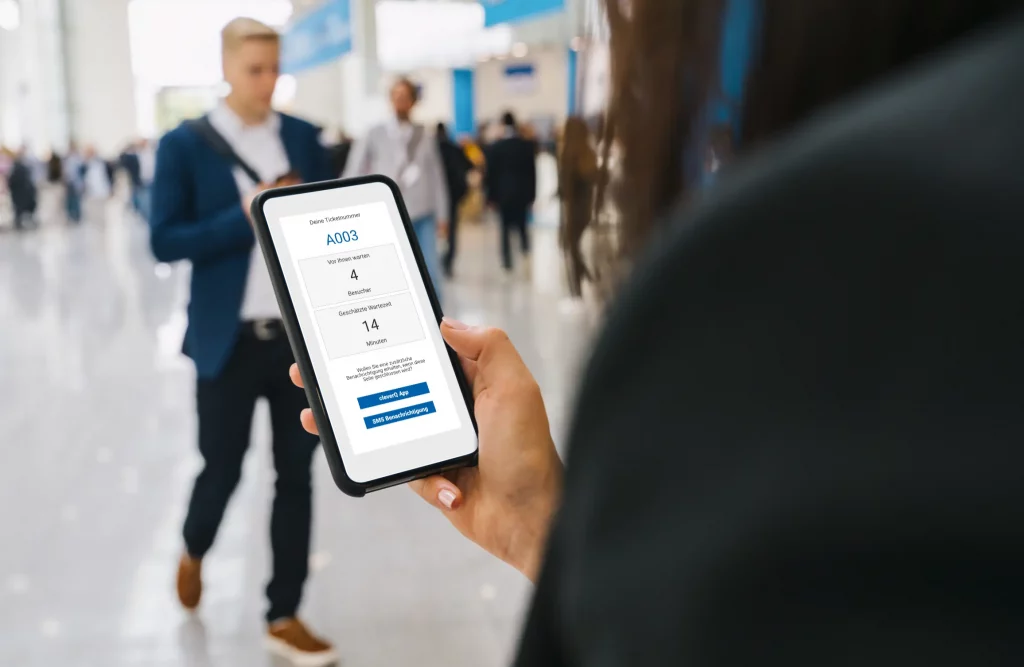
1. basic queue management
This is the basic functionality, which is supplemented by the providers with additional functions to meet the requirements of your company. Some of the key features to look out for:
- Automated wait time alerts that regularly inform customers about the status of their queue.
- Self-service check-in for customers to join the queue without having to visit your store.
- Data and reports that give you a holistic view of your operational efficiency and service offering.
- Customer routing based on their needs.
2. lobby management
One of the most important, yet overlooked, aspects of a queuing system is security. Yes, customer experience and efficiency are important, but maintaining a safe and relaxed waiting environment greatly enhances customer satisfaction. Some of the online queues like virtual queues and automatic updates, help you eliminate inefficiencies and the crowding in your waiting area.
3. automated reminders
Queuing systems include automatic updates that remind customers when their appointment or booking is due. This way, they can either show up at your place of business or reschedule the appointment for a more convenient time so you can schedule your walk-ins. With cleverQ, you can even customize your reminders according to your customers’ preferences.
Scheduling
Scheduling forms the basis for your queue management. By allowing your customers to book appointments in advance, you ensure that they arrive in an orderly fashion. Over-scheduling your bookings will result in long queues and frustrated customers. On the other hand, if you schedule too few appointments, you won’t be able to maximize your sales potential. A digital queuing system optimizes your appointments and ultimately increases your profits.
Virtual queues
Virtual queues are convenient, shorten the customer’s wait time, and give them the flexibility to wait as they see fit. This reduces the number of people in the waiting room and also the perceived waiting time.
What should you consider when choosing an online queue management system?
When it comes to choosing the right online queue management software, there is no magic formula. You need to choose a system based on your individual business requirements. A healthcare center, for example, will likely need a more complex solution than a retail store because there are multiple touch points.
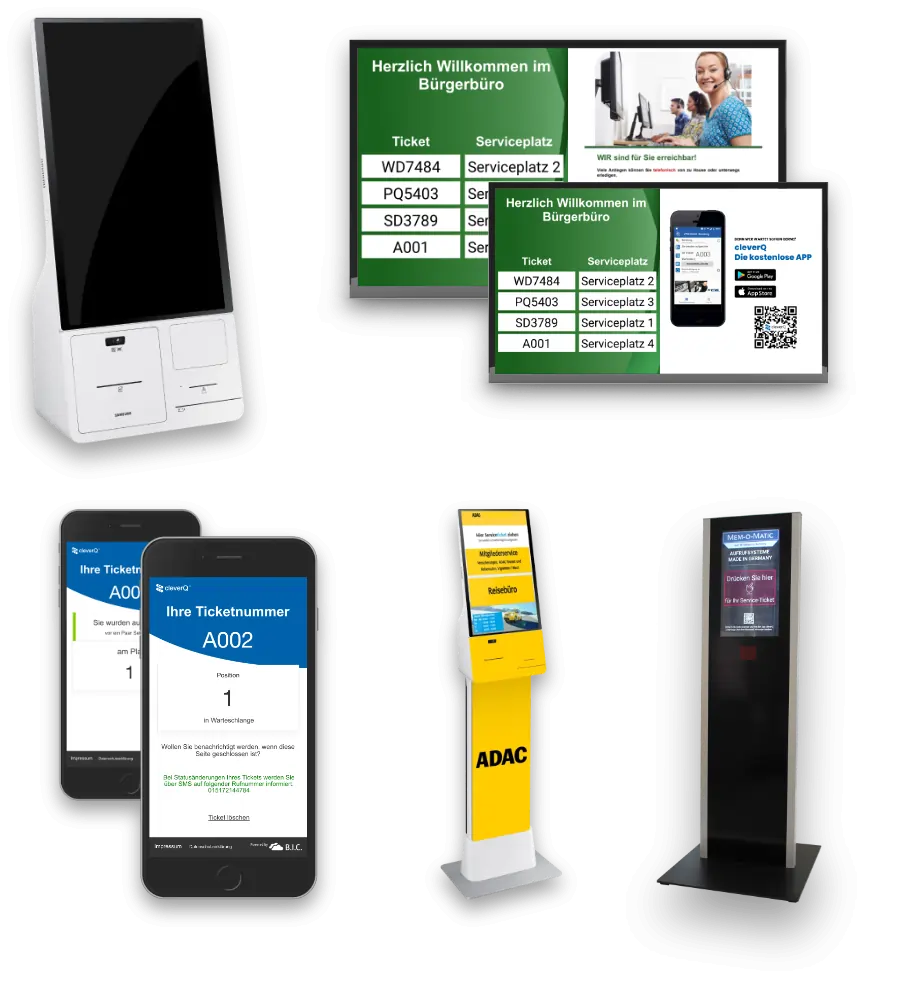
1. scalability
If your customer demands increase or your business needs increase, can the system handle it, or do you need to buy a new system? Choose a queuing system that can grow with the needs of your business.
2. budget
Budget: The right system should offer you much more than you spend on it. Since not every business has an unlimited budget for a queuing system, you should choose a solution that allows you to start with the basic features and add more as your needs grow.
3. safety
Your customers trust you with their sensitive data don’t let them down! Choose a solution that guarantees data security. When your customer data leaks out, your reputation suffers and customers lose trust in your company.
4. integration
Companies often use multiple solutions at the same time. It’s important to let the system integrate with your digital and physical channels to optimize the customer experience across all touchpoints, lower your costs, and optimize the employee learning curve.
5. omnichannel solutions
Choose an online queue management system that can address the diverse needs of your customers. There are customers who prefer to book appointments on-site, while others find online booking more convenient. Don’t exclude any of them.
6. third-party integration
The solution you choose should ideally allow integration with third-party applications, including calendars. For example, if the system has appointment booking capabilities, your employees can synchronize their calendars with the system.
The queuing system should also adapt to the different needs of your customers without interrupting the workflow. For example, it should be able to centrally manage both virtual appointments and walk-in customers.
The most important factors in choosing the right provider
Choosing the right partner for your queue management solutions can be difficult, especially if you are working with development companies for the first time.
Below are the criteria you should use to make your selection:
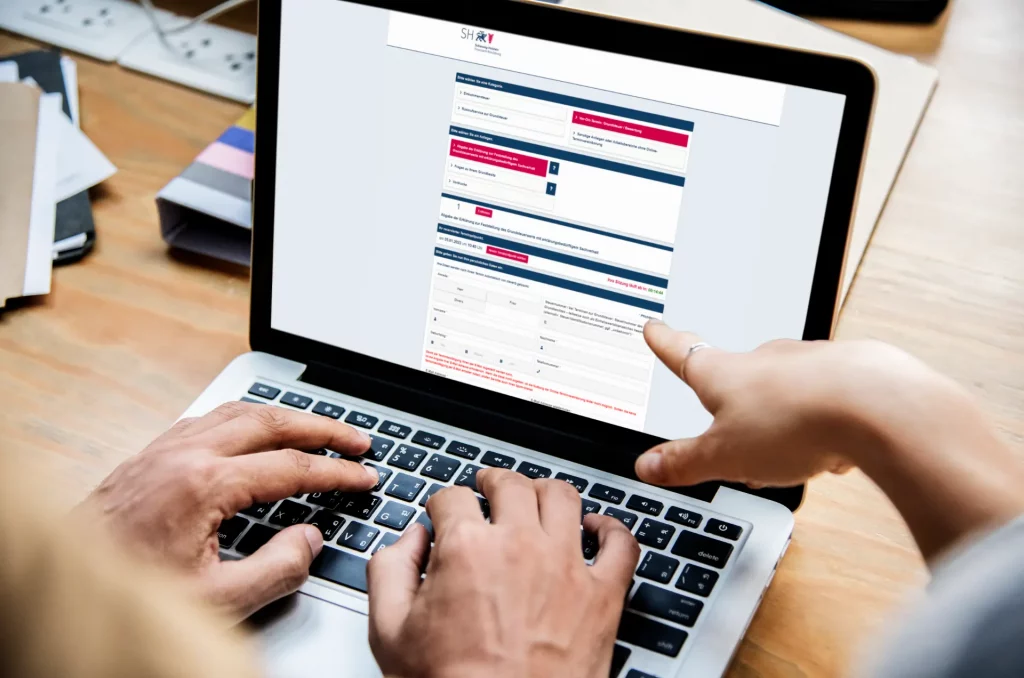
1. portfolio
Look at the company’s past projects and pay close attention to the clients it has worked with. This will give you a feel for the quality of their work and their knowledge of the industry. Don’t forget to check how long they’ve been in the industry, what their online reviews are like, and research information about their founders.
2. corporate culture
Does the provider’s corporate culture match yours? The creative side of system development is very important and if your philosophy is different, you will have a hard time working with them, especially if you need a customized solution.
3. reliability
Can the company deliver your solution within the agreed timeframe? Is the provider available when you need them? The first few weeks of implementing a new system can be hectic and you need a vendor to guide you through the entire process.
4. communication
The customer-supplier relationship in the field of applications and software is often a long-term partnership. The supplier should provide advance notice of maintenance and updates or downtime that will impact your business.
5. transparency
The queue management system vendor should provide information about its professional scope, limitations, as well as best solutions and application risks, and communicate potential risks of delay in queue management. You should also note that software is dynamic. This is not a one-time purchase, and at some point you will need an update. The provider should be open to you. In any case, you should be informed about any maintenance fees or updates that may be incurred.
6. customer support
Customer Support: In the first few months of implementing the queue management system, there will be a lot of back and forth between you and the vendor. You will likely encounter some challenges as the project progresses, and the vendor should be prepared to answer any questions you may have.
Conclusion
Don’t forget to gather background information about the company before the first meeting. If possible, choose a provider that also offers complementary services. If your business needs additional services, you don’t have to go back to the drawing board.
Take advantage of the power of queuing systems today.
Virtual queuing systems are becoming more of a necessity than an option, which is why so many companies around the world are adopting them. They give you access to valuable customer data to help you make better decisions. These systems also lower your operating costs, increase staff productivity and streamline communications. Most importantly, queuing systems reduce waiting time, which contributes to a positive customer experience.

